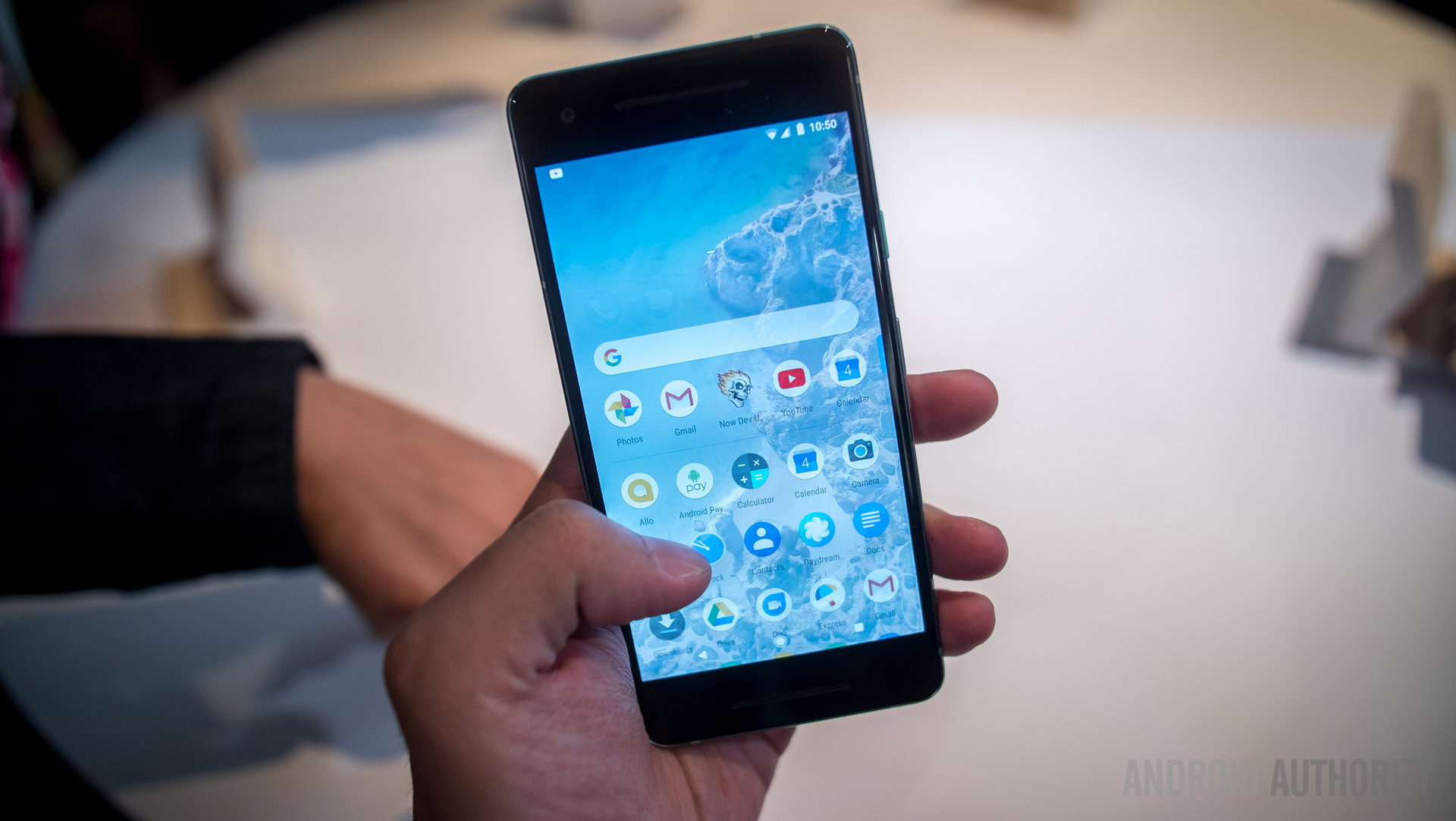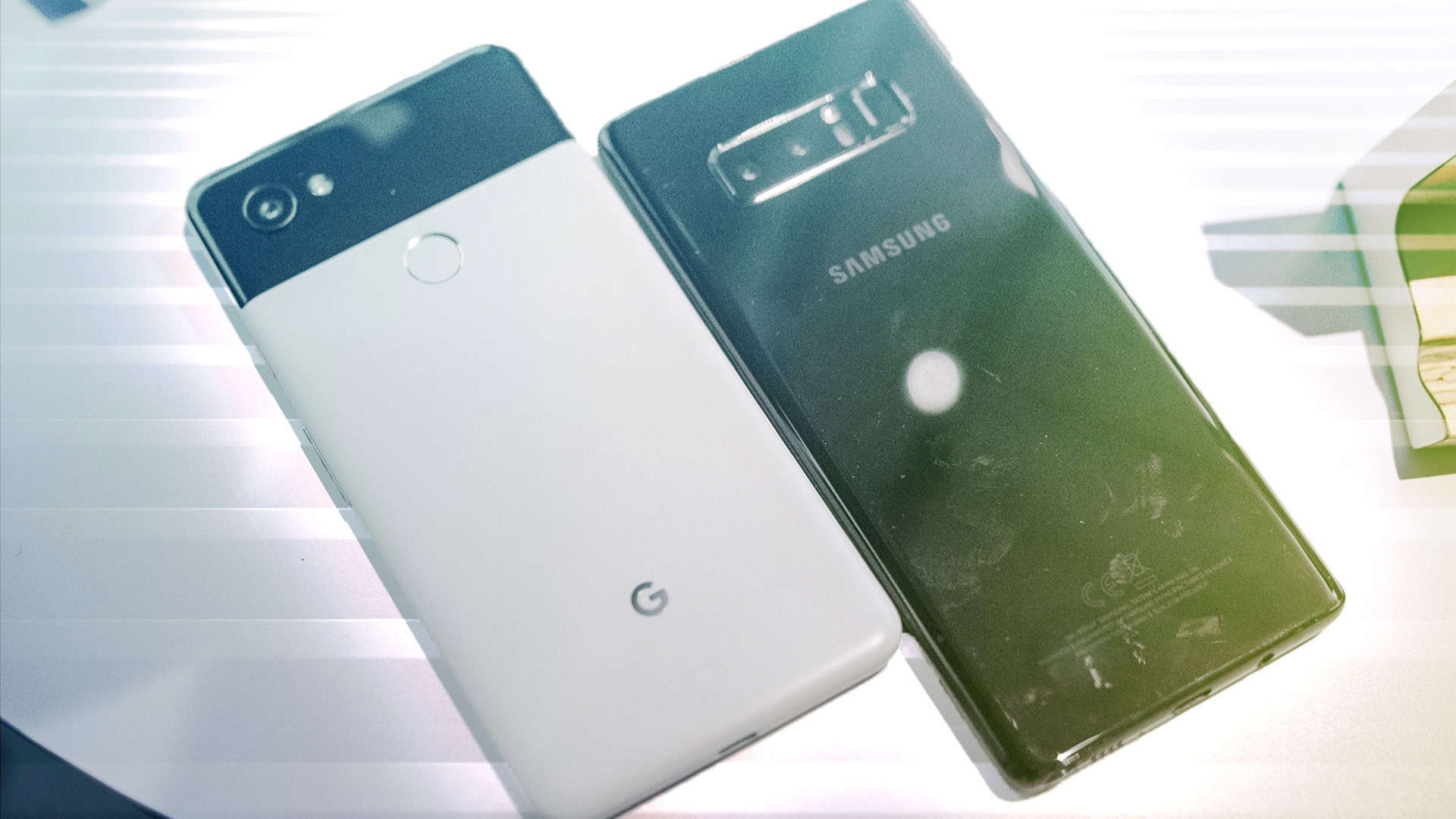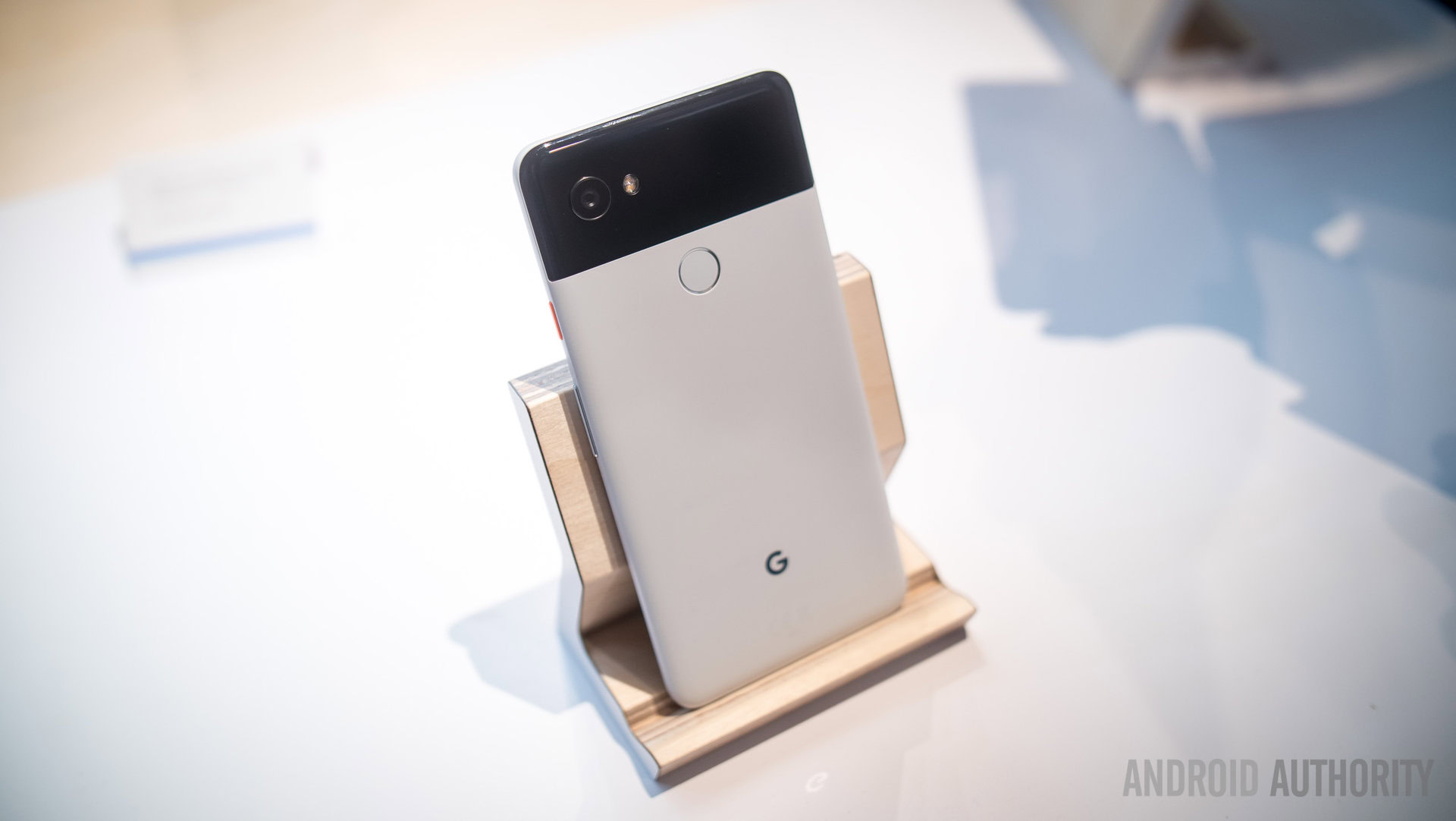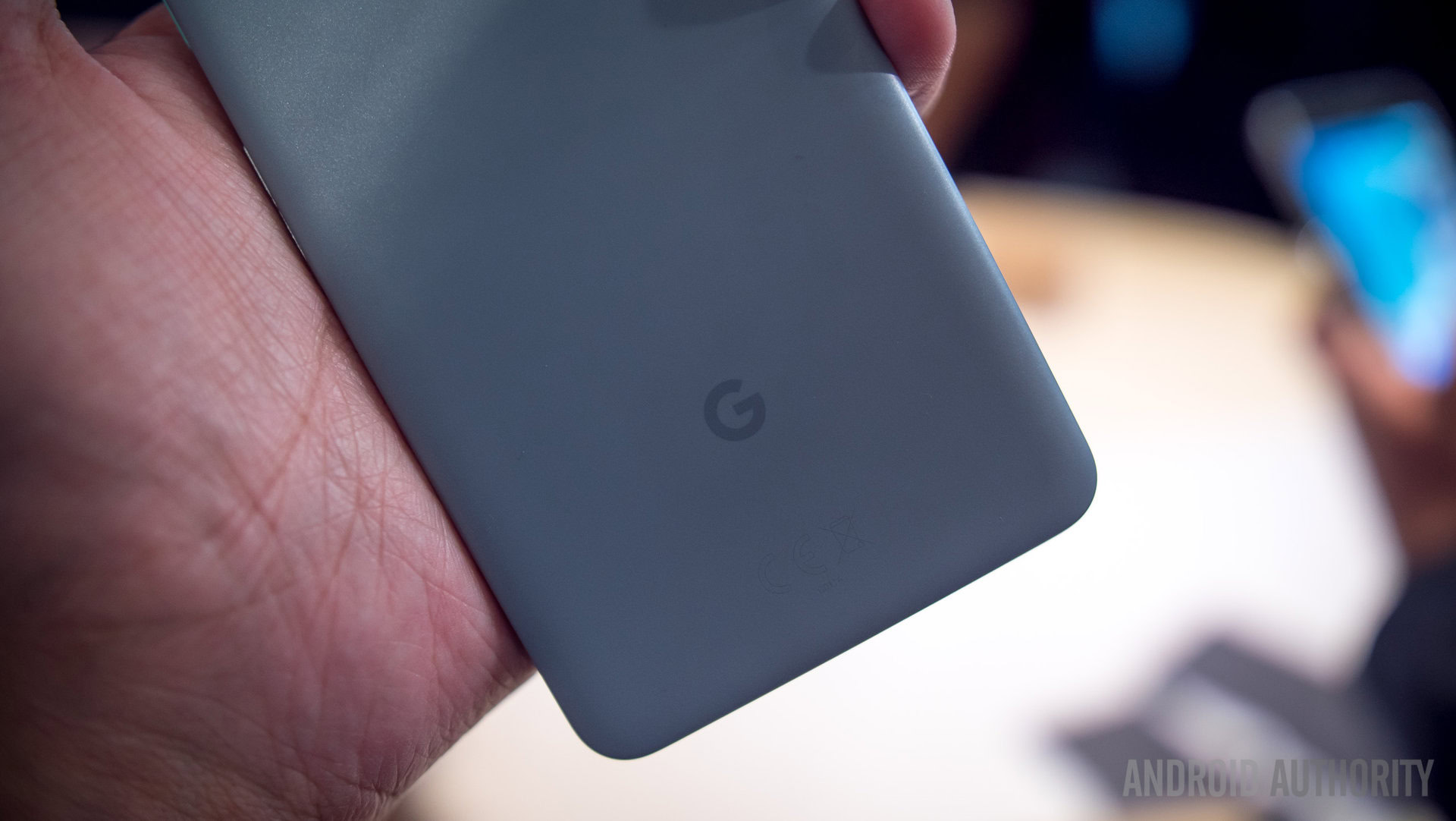Affiliate links on Android Authority may earn us a commission. Learn more.
Is the Google Pixel 2's screen-to-body ratio a big deal?

By now you’ve probably already seen and heard plenty about Google’s new Pixel phones. These were unveiled earlier this week in San Francisco, alongside a slew of other new Google products, and combine the best of what Google has to offer in software, hardware, and AI.
You may also have noticed that the Google Pixel 2 doesn’t look like many of the other flagship smartphones from 2017 — and I’m not just talking about its rear visor. While the larger Google Pixel 2 XL has an impressive screen-to-body ratio like we’ve seen on other flagships such as the Galaxy Note 8 (~83.2%), Galaxy S8 (~83.6%), LG V30 (~81.2%), Apple iPhone X (~82.9%), Essential Phone (~84.9%) etc, the regular Google Pixel 2 has comparatively thick bezels, achieving a screen-to-body ratio estimated at ~67.9%.

There has been a trend towards slimmer smartphone bezels in recent years in order to allow the space they occupy to instead be utilized by something with a function, like the display. This bezel area usually isn’t completely empty on a smartphone, though — it can contain important features like speakers, sensors, or other buttons — but manufacturers are finding increasingly clever ways to move or replace the entities typically found there.
Thinner bezels allow for bigger screens on smaller phones (potentially making them lighter and easier to use) and they’re generally perceived as more attractive. It’s for these reasons that we’re seeing more and more smartphones with the so-called “full-screen displays” popping up.
I’ll take the Galaxy S8 front and Pixel 2 back, please. pic.twitter.com/PykfsfiUIR— Vlad Savov (@vladsavov) October 5, 2017
So, what does it mean for Google’s handset to be at odds with current smartphone trends? Was this a bad design decision? Or are bezel-less displays overrated? Let’s explore this in a bit more detail.
Has Google missed an opportunity?
It’s not clear why the Pixel 2 doesn’t make use of such advances in smartphone tech, but it’s likely related to costs and design limitations. Unlike the Pixel 2 XL, manufactured by LG, the standard Pixel was developed by HTC— a manufacturer yet to release a device with an edge-to-edge screen. Perhaps this was just outside of the scope of what HTCcould reasonably achieve? If the Pixel 2 could have featured a bigger display on the same size body, without increasing costs or making any other changes, maybe that’s what would have happened.
As it stands, the Google Pixel 2, though not inexpensive, is less costly than a number of other recent flagships. Google’s device starts a $649, while the new iPhone X is priced at $1000, the Galaxy S8 launched at $720, and the Essential Phone costs $699.

Of course, there are plenty of other less costly devices with higher display to body ratios also available. Nevertheless, one could argue that because the Google Pixel is on the cheaper end of that scale, its bezels are acceptable.
Not only that, but the benefits of smaller bezels are in debate. For starters, there is an argument that the screens on phones with bigger bezels are less likely to crack. Meanwhile, manufacturers have in some cases had to change screen format to accommodate these wider displays, from 16:9 to 18:9 and so on — a move that doesn’t always provide good results. Playing media or games with such bezels leads to black bars above and below the display; it’s not the end of the world, but it’s not ideal.

Then there is the notion that Google deliberately designed the Pixel 2 this way to distinguish itself from Apple, but I don’t buy that idea. Using small bezels wouldn’t automatically mean the device was similar to the iPhone X, and Google has followed Apple on the decision to remove the headphone jack anyway.
In the end, I think large bezels are probably a sacrifice Google had to make, rather than a design choice it was really keen to employ.
Summing it up
As much as some fans might not want to, I think they would ultimately have to agree that the Google Pixel 2 is worse off with a ~67.9% screen-to-body ratio than it would have been with an 80%-plus screen-to-body ratio like its rivals. Most would probably agree that the aesthetic and usability qualities bezel-less displays provide outweigh arguments about sturdiness and price (like I said, the Pixel ain’t cheap).
Related: Why I feel the Google Pixel 2 may be dead on arrival
With manufacturers pushing for ever-larger displays on ever-smaller phones, the Pixel 2 can come across as a bit behind the times. And if you also consider that the Nexus 4 from November 2012 — a Google device manufactured by LG — had a ~68.4% screen-to-body ratio, the new Google phone looks even more out of touch.

So then the question is not whether the Pixel 2’s large bezels lessen its appeal but to what extent do they lessen its appeal? I don’t have the answer to that, but what I would say is, I think Android fans would tend to be a bit more forgiving of this design on a device from Google than from Sony, which has also been accused of dragging its feet in this area.
Google established the first Pixel (and the Nexus series before that) as a phone that put substance before style. Though it’s not unreasonable to expect both, I think Google’s priorities are the right ones in relation to its audience.
I mean, if you’re interested in buying a Google Pixel phone, the chances are that you also prioritize software and function above all else — and big bezels aren’t going to stop the Pixel 2 beating the competition on that score.
What are your thoughts on the Google Pixel 2’s design? Do you disagree with my take? Let me know in the comments.
Note that the screen-to-body ratios discussed here are based on estimates from PhoneArena and GSMArena and may not precisely reflect the real-life ratio.